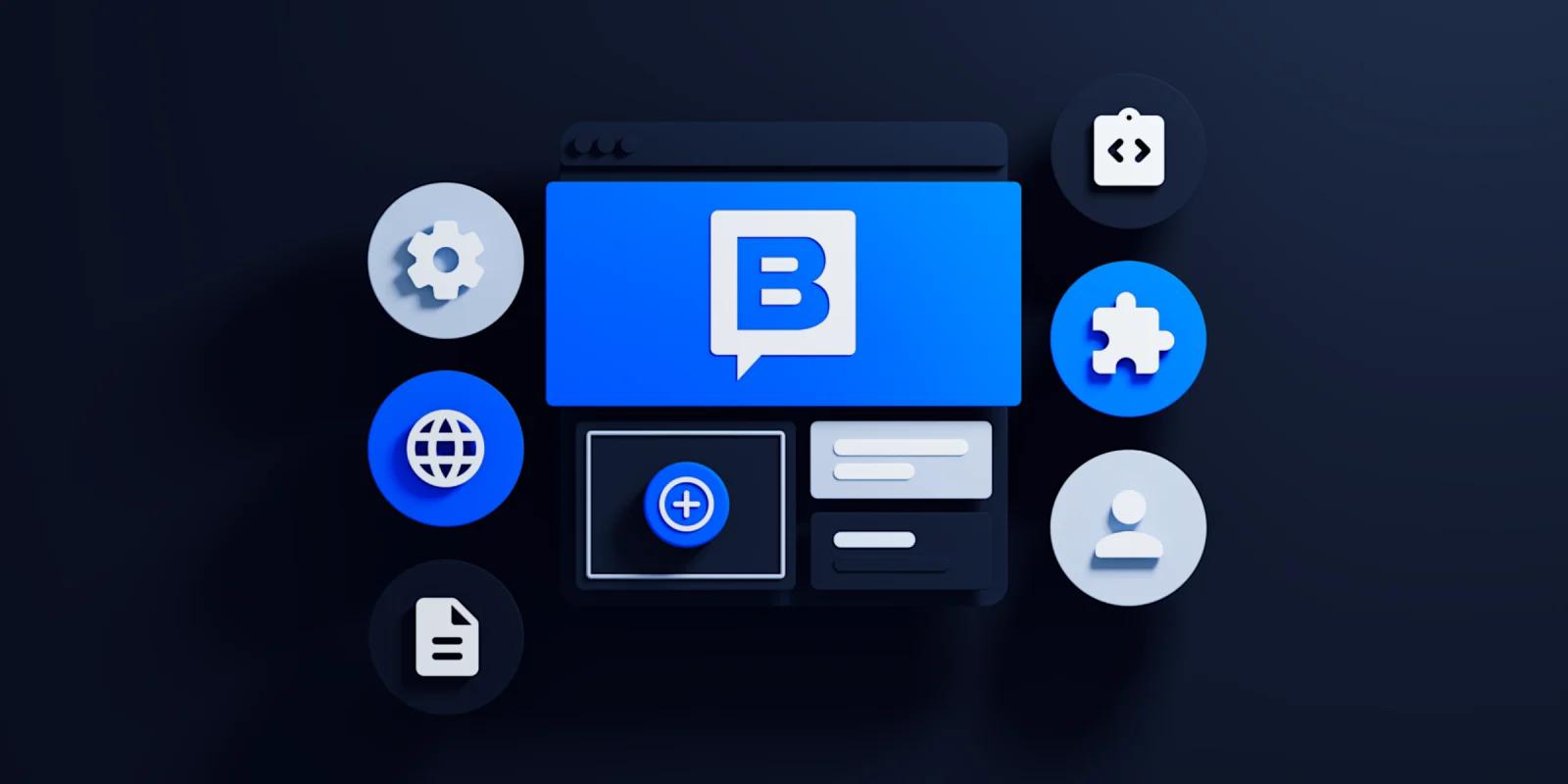We recently began using Storyblok as one of their new technical partners, helping one of our clients get started on a new project. It is the only headless CMS with a visual editor, helping you organize content for everyone.
It provides developers with all the flexibility they need to build reliable and fast websites while giving content creators with no coding skills the ability to edit content independently of the developer.
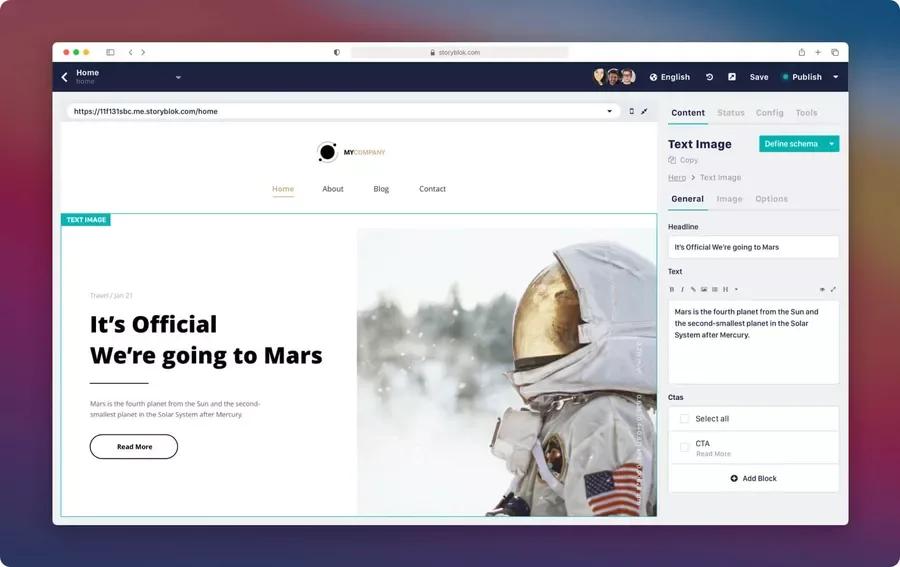
storblok-cms
What is Storyblok CMS?
Storyblok is a user-friendly and powerful headless CMS. It is a smart tool that assists businesses in taking care of their content in a systematic manner. Its visual composer allows users to view the changes they make to their websites before they go live and helps to build pages with a few clicks.
The content blocks enable developers to reuse components such as teasers, grids, or feature sections in other places, refilling them with new content as needed.
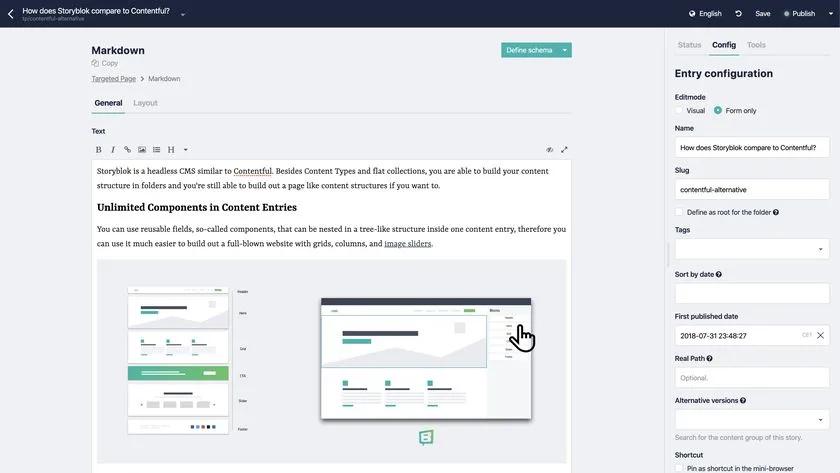
storyblok-form-based
Storyblok empowers you to use your content on a single website as well as on other platforms such as iOS or Android through APIs (Application Programming Interfaces). This is a revolutionary approach compared to most of the monolithic CMSs out there.
Developers can now focus on providing more value for their customers instead of maintaining the monolithic backend infrastructure.
Your content may be decoupled from the presentation layer by integrating with the Storyblok API, which means you can choose any front-end technology you like.
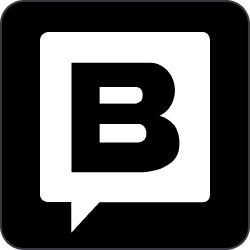
What Are the Use Cases of Storyblok?
Diving into the world of headless CMS with Storyblok opens up a realm of possibilities. Here’s how different businesses are harnessing the power of Storyblok to drive their digital initiatives forward:
Marketing Websites
Imagine a marketing website that's as dynamic as your market strategies. Storyblok turns this into reality. With its visual editor and component-based structure, marketing teams can craft and iterate on storytelling that captivates, all without sending a single distress signal to IT. From landing pages that convert to blogs that engage, Storyblok makes marketers nimble, allowing brands to adapt their message at the speed of market trends.
E-commerce Websites
E-commerce is evolving, and Storyblok is at the forefront, powering digital storefronts that are as customizable as your customers’ preferences. Tailor your product listings, manage promotions with ease, and create personalized shopping experiences that boost conversions and foster loyalty. Storyblok and e-commerce are a match made in digital heaven, offering scalability that grows with your inventory and traffic, ensuring your site is never a step behind your sales.
Mobile Applications
For mobile apps, content needs to be as fluid as the user experience. Storyblok stands out by ensuring that your app’s content is as adaptable as its interface. Push updates in real-time, personalize content for different user segments, and keep your app fresh—all without constant redevelopment. Whether it’s a fitness app delivering personalized workouts or a news platform with the latest stories, Storyblok keeps your content at the fingertips of your audience.
IoT (Internet of Things)
In the burgeoning world of IoT, Storyblok is making waves by enabling content management for devices that are redefining connectivity. From digital billboards that change with the weather to smart home devices that offer personalized tips for energy savings, Storyblok’s headless architecture means your content can live anywhere—not just on traditional web or mobile platforms. It’s about bringing relevant, timely content to the most innovative of devices, engaging users in their connected world.
How Does the Storyblok API Work?
The Storyblok API works by allowing developers to make calls or send requests to access the API and send and receive data. JSON is used for API communication. There are four methods for sending and receiving data using the REST API.
- GET: Gets information from a server.
- PUT: This method is used to update information in an existing resource.
- POST: This method sends data to a server while also creating a new resource.
- DELETE: This command deletes a specific resource.
The example of a customer in a restaurant is the most straightforward approach to explaining how APIs function. The customer places an order by informing the waiter. The waiter communicates that information to the kitchen, where the order is created before being given to the waiter, who delivers it to the customer.
In this example, the customer is a user who makes a request, and the waiter is an API that forwards that request to the kitchen or server. The server handles the request, and the API returns the result to the user.
Which APIs Does Storyblok Offer?
Storyblok provides a variety of APIs to assist you in implementing the optimal user experience.
Content delivery API v2
The Content Delivery API is designed around the REST architecture principles and supports the four basic HTTP verbs GET, POST, PUT and DELETE. Responses will be in JSON (Javascript Object Notation) format. All API responses, including errors, return JSON. This performance-optimized API delivers content to your audience.
Management API v1
The Management API allows for extensive integration with the CMS and provides a programmatic approach to producing and modifying your content. The Storyblok Management API is similarly based on REST. The API provides predictable, resource-oriented URLs and employs HTTP response codes to signal API errors. It employs built-in HTTP capabilities such as HTTP query parameters and HTTP verbs standard HTTP clients recognize clients.
GraphQL API v1
In addition to the traditional REST API, Storyblok may also be used with GraphQL, which has various advantages such as automated documentation and strongly typed replies. GraphQL is an open-source data query and manipulation language for APIs, and a runtime for fulfilling queries with existing data. The API is a read-only endpoint that is designed for quick content delivery.
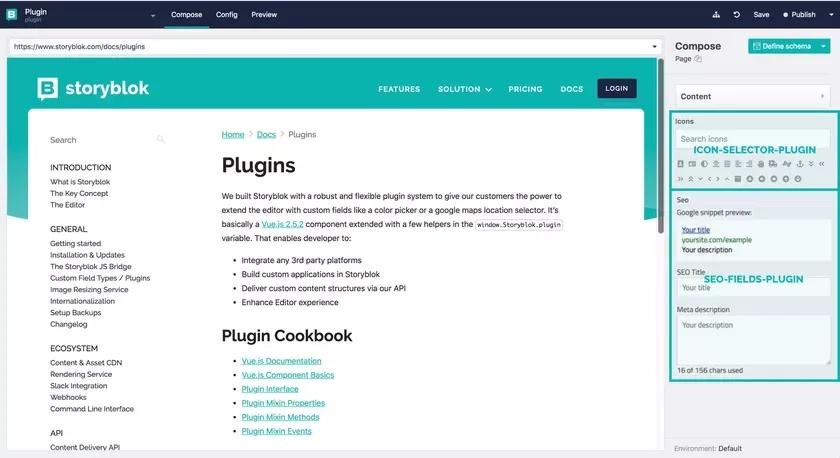
storyblok-cms-plugins
What are Some Storyblok Plugins?
Storyblok has a robust and flexible plugin system to give you the power to extend the editor with custom fields like a color picker or a google maps location selector. There are three different ways in which you can extend Storyblok:
Custom Applications
Custom Applications are the biggest of all extension types and are the right choice if you want to extend Storyblok with some complex functionality like a Dashboard. They will have their location in the Space sidebar and a big window to build your functionality similar to the popular Tasks app.
Field-types
Field types allow you to extend the visual editor with custom fields like a color picker or a google maps location selector. If you want to create more complex field types, you can develop them in a local development environment and still preview the output in the Storyblok Editor.
Tools
Tools are a different way to extend your visual editor. They allow you to improve your productivity by adding some functionality to the editor. Storyblok tools are specific to stories and will appear in your Visual Editor when editing a story. Two examples of Tools are importing and exporting content or a custom clipboard.
What Are Storyblok’s Pricing Tiers?
Storyblok has 4 pricing editions, from $0 to $2,999. A free trial of Storyblok is also available. Following are different pricing tiers one can select according to the features that meet his budget and needs.
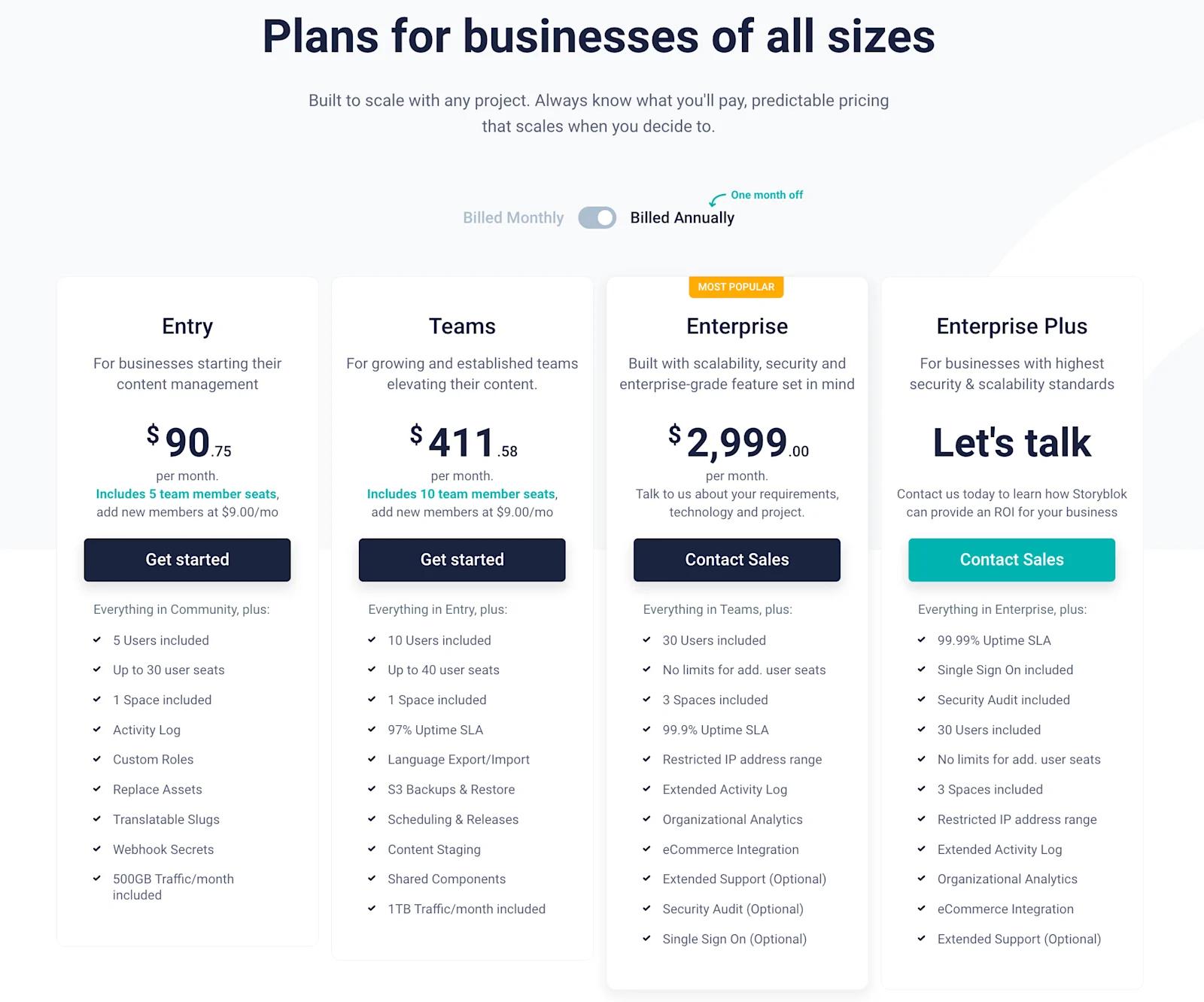
storyblok-cms-pricing
When is Storyblok a Good Fit?
People often struggle when selecting a CMS for their projects because it is critical for them to select a solution that will provide flexibility and the right tools for the price. When simplicity, speed, independence, and compatibility are priorities, Storyblok is a good fit.
- Simplicity: Creating projects with Storyblok is simple from start to end. It is the best choice for users with no coding knowledge or developer skills. The developers find that setting it up is super straightforward. Storyblok stands out by being easy to use.
- Speed: It takes much less time to get going. It takes weeks instead of months to develop a new, global, multilingual website Storyblok.
- Easy project handover: It takes a short amount of time to get the clients onboarded. Users have a simple learning process due to the easy use of the CMS and its nice and clean UI.
- Independence: After the onboarding process is completed and the project handed over, clients want to be able to leave the nest and fly away independently, which is easily achievable with Storyblok. This is due to the way Storyblok manages content and content types using blocks, which is very intuitive and comprehensive for non-technology users.
- Compatibility and Integrations: Storyblok is compatible and integrates with every framework so that you are free to choose the best fit for your project. Storyblok has integrations for eCommerce, localization, deployment and hosting, digital asset management, and much more.
- Real-time Visual Editor: The Storyblok Visual Editor is the star of the show. It is a feature users cannot live without. Once they try it, there is no turning back. The editor is a live preview of the current page that you are working on and allows you to simply click on any part of the preview to edit its content.
Maybe Storyblok isn’t the headless platform that you’re team is currently looking for—we've got plenty of comparison articles on to see how alternative headless solutions compare with Storyblok.
- Storyblok vs Contentful
- Storyblok vs Sanity
- Storyblok vs DatoCMS
- Storyblok vs Prismic
- Storyblok vs WordPress
- Storyblok vs Webflow

